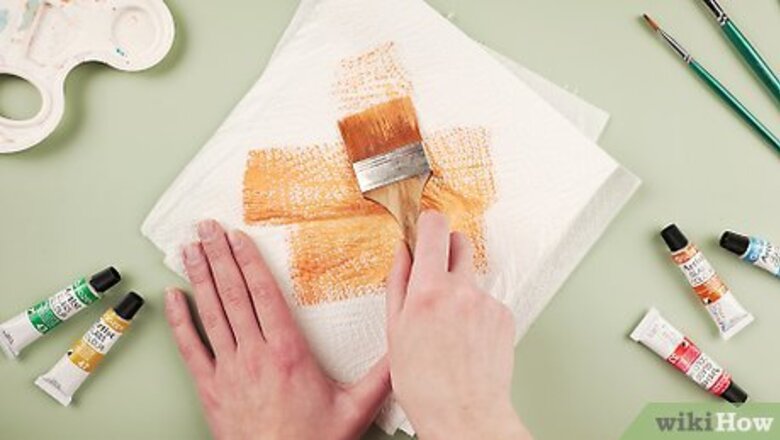
views
Using Solvent
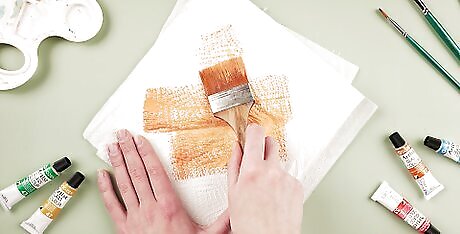
Wipe the brush on a rag or paper towel. Try to remove as much paint as possible. Getting rid of the excess paint makes the job of cleaning your brush a lot easier! You can do this by wiping your brush on the edge of the paint can as you are finishing up, and then wipe the brush on a rag or paper towel to remove even more paint.
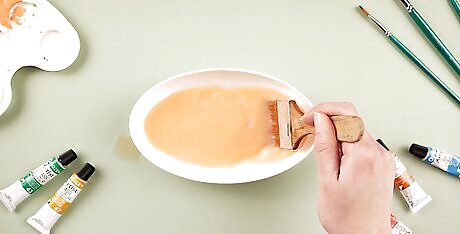
Rinse the brush in the appropriate solvent. It's okay to use the dirty solvent from your painting session. Pour it into a bowl or bucket and gently run your brush back and forth through it. Wipe the brush along the sides and bottom of the container. If you have a paint comb, then you can also use this while the brush is in the solvent. Here are your solvent choices: Use mineral spirits for most oil-based paints. Use water for water-based paints like acrylic, watercolor, latex, and also most white glues and wood glues. If the paint is caked on, it may help to break it up with a wire brush, but keep in mind that this can damage your brush. Use denatured alcohol for shellac. Check the product's label if you're not sure what kind of paint you have. It will contain instructions for what solvent to use.
Use multiple cans of solvent to clean stubborn oil paint. First, dip the brush into a can of paint thinner or the solvent of your choice. Swirl the brush around and try to get as much of the paint off the brush as possible. Then, repeat this in a second can of solvent, then a third. By the time you're finished swirling the brush in the third can of paint thinner, most of the paint should be gone. Try spinning the brush if there's any paint remaining.
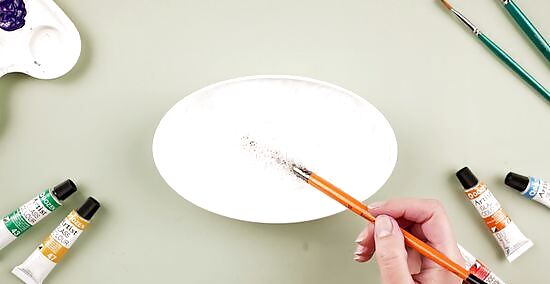
Wash the brush’s bristle in dish soap and water to get the solvent out. After you finish cleaning the brush in the solvent, remove the brush, rinse it under running water, and then add some dish soap to the bristles. Work the soap into the bristles and then rinse the brush until you have removed all of the soap. After you finish, wipe the brush with a clean rag or paper towel again.

Rinse the brush under warm running water. Rinse the bristles one more time. You may want to rub the bristles of the brush between your fingers as you rinse, but be very gentle with sable brushes. You can use a paint comb to do this.
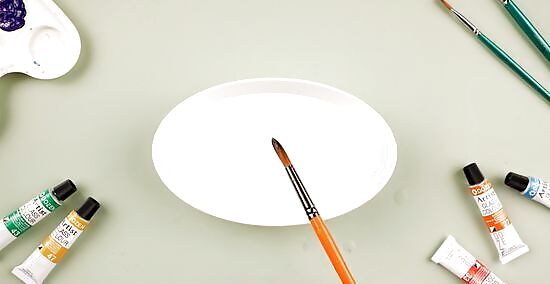
Shake or blot out the extra water. When the brush is clean, get rid of excess water. Reshape the bristles to the correct form, then store the brush upright in a container so that the bristles are not deformed when dry.
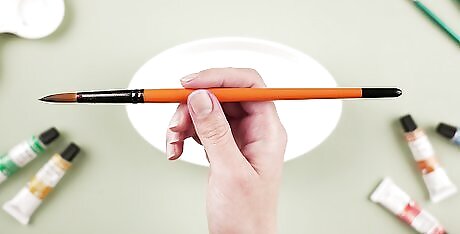
Store the brush in its original container. Once you've gotten as much water out of the brush as possible, place the brush back in its case. This will help preserve the shape of your brush, since the bristles will be neat and contained. Be sure to dry the brush as much as possible before you store it, since storing a wet brush could lead to mold and mildew growth.
Using Fabric Softener
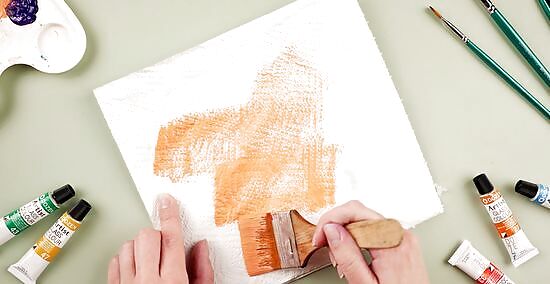
Wipe the excess paint from the brush. Run the brush over a paper towel or a cloth to get rid of as much paint as possible.
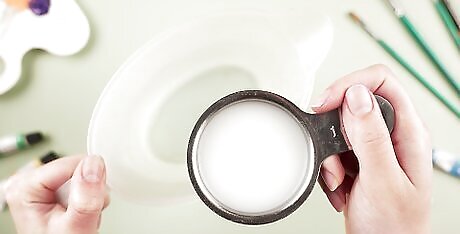
Mix a gallon (3.8 L) of water with 1/2 cup (120 mL) fabric softener. Use warm (but not hot) water. This solution will help loosen the paint from the brush, making it slip right off.
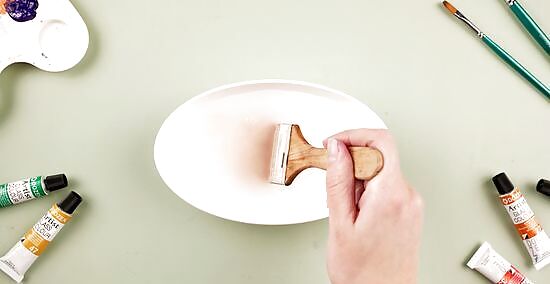
Swish your brush through the solution. Swish it around for several seconds, until you see the paint coming off. Swish for a few more seconds.
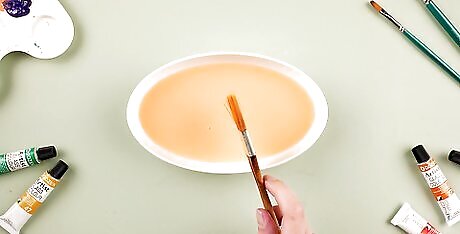
Shake off the excess fabric softener solution. Squeeze excess water from the bristles using a paper towel or rag. You can also twist the brush back and forth in your hands or tap it against your shoe.
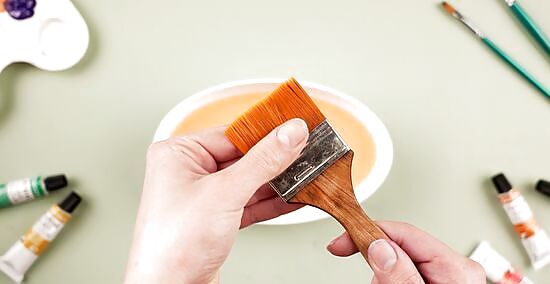
Reshape the bristles and stand the brush up to dry. Let the bristles dry completely before storing your brush.
Using Vinegar (for Paint-Hardened Brushes)
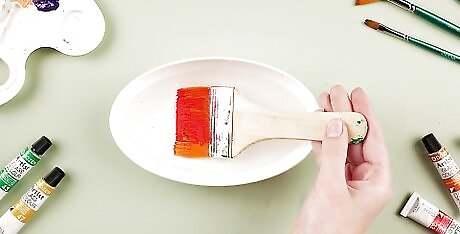
Soak the brush in white vinegar for an hour. After an hour, check to see if you can bend the bristles back. If you can't, put it back in and keep soaking it for another hour.
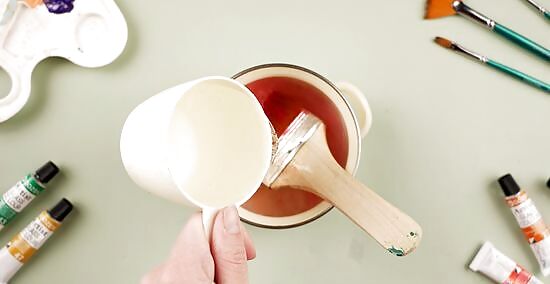
Place the brush in an old pot and cover it with vinegar. If there's still hardened paint in your bristles after 2 hours of soaking, try boiling. You want the vinegar to completely cover the brush's bristles.
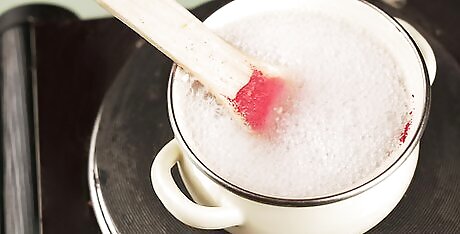
Bring the vinegar to a boil on the stove. Let it simmer for a few minutes with the paintbrush in it.
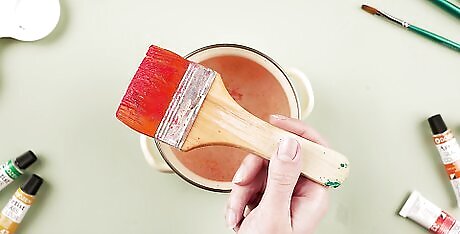
Remove the brush and let it cool. It will be very hot to the touch at first, so be careful. You may want to use a pot holder or tongs to remove it.

Comb the brush bristles. You can use your finger or an old comb. Place it at the base of the bristles and pull through to comb out the loosened paint. Keep doing this until the hard globs of paint have all come loose.
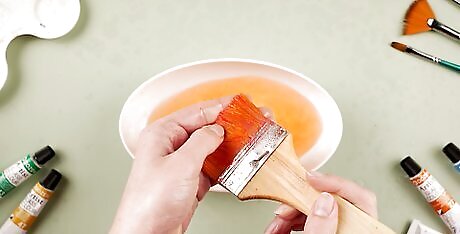
Rinse the brush. When the paint is loose, rinse the brush in running water to wash it all away.
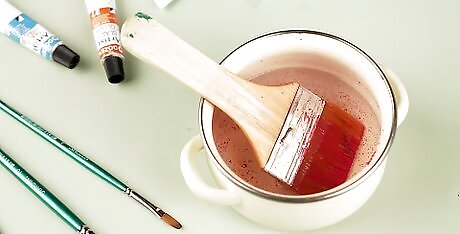
Repeat as necessary. You may need to do another vinegar boiling session and comb the brush again to get it back into shape.
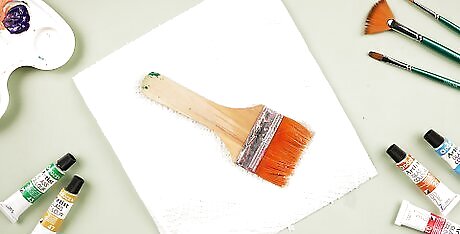
Let the brush air dry. Place it upright in a jar and reshape the bristles. After it's completely dry, store it away.
Using Liquid Dish Soap (for Oils)

Squeeze as much paint as you can out of the brush. Do this into a paper towel or rag.
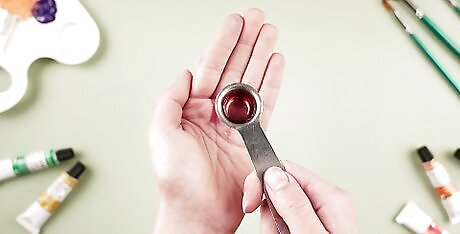
Squeeze liquid dish soap into the palm of your hand. About a quarter-sized amount of dish soap will work. Turn on your faucet and wait for the water to warm up.
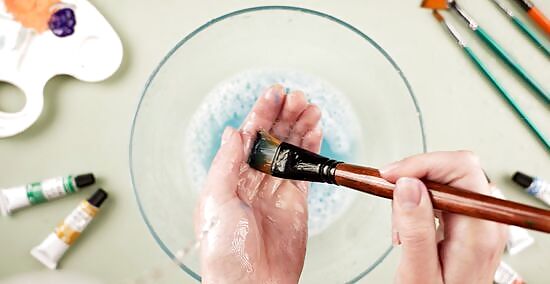
Swoosh the brush in a circular motion in your palm. While warm water is running, into your palm, swoosh the brush into the soap. Rinse and repeat until the soap no longer shows any signs of paint. This will require about three goes at least.
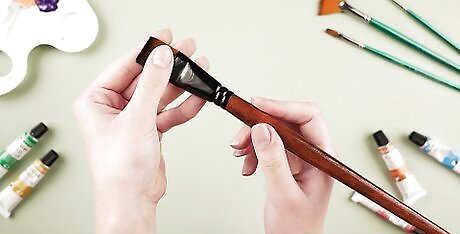
Reshape your brush. Let it dry thoroughly before using again with oil paint. Lay it down so no water is trapped in the brush head causing loosening of bristles and/or chipped, warped handles. This is optional, but you can also clean with mineral spirits every few months, for a deeper clean.
















Comments
0 comment